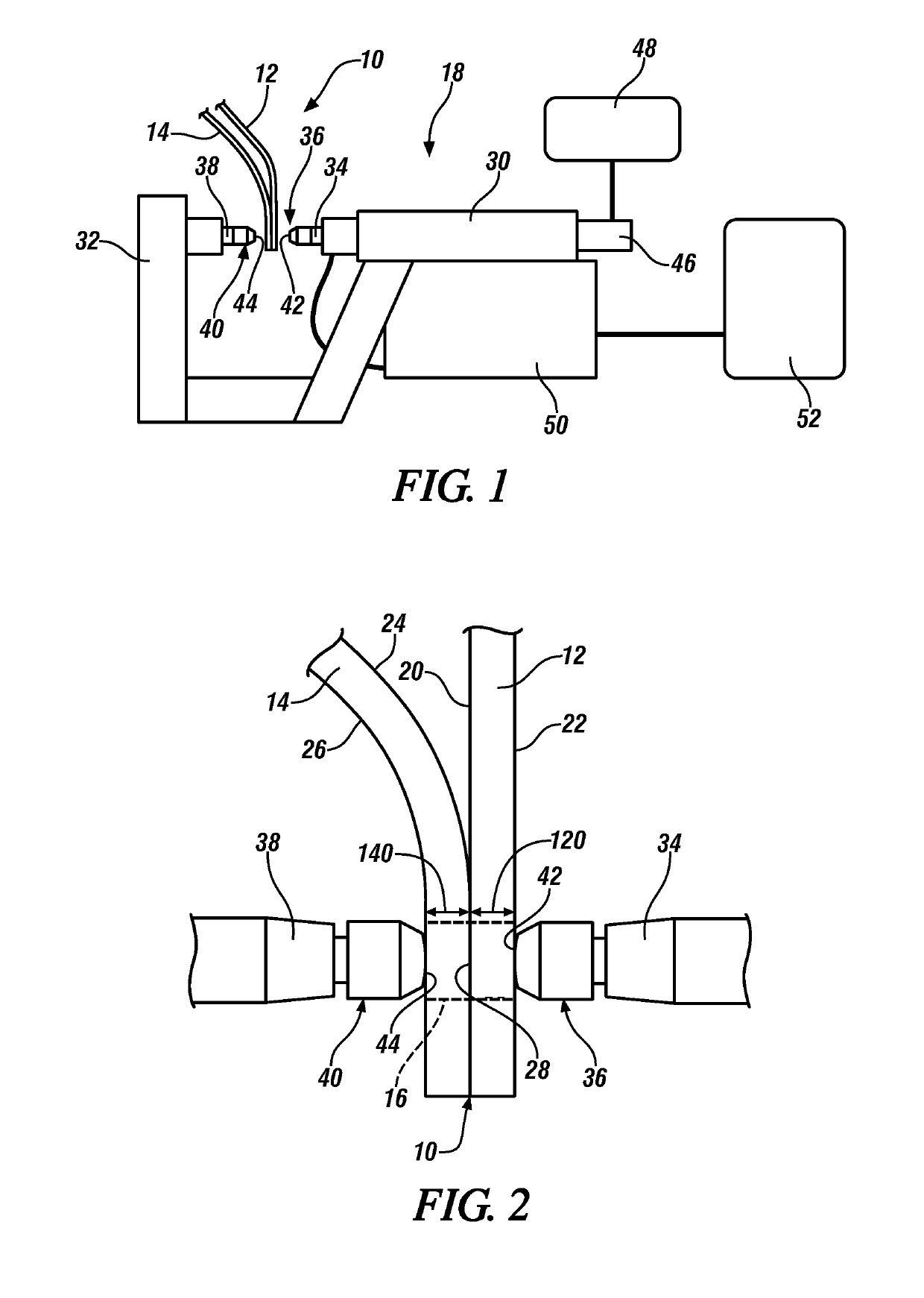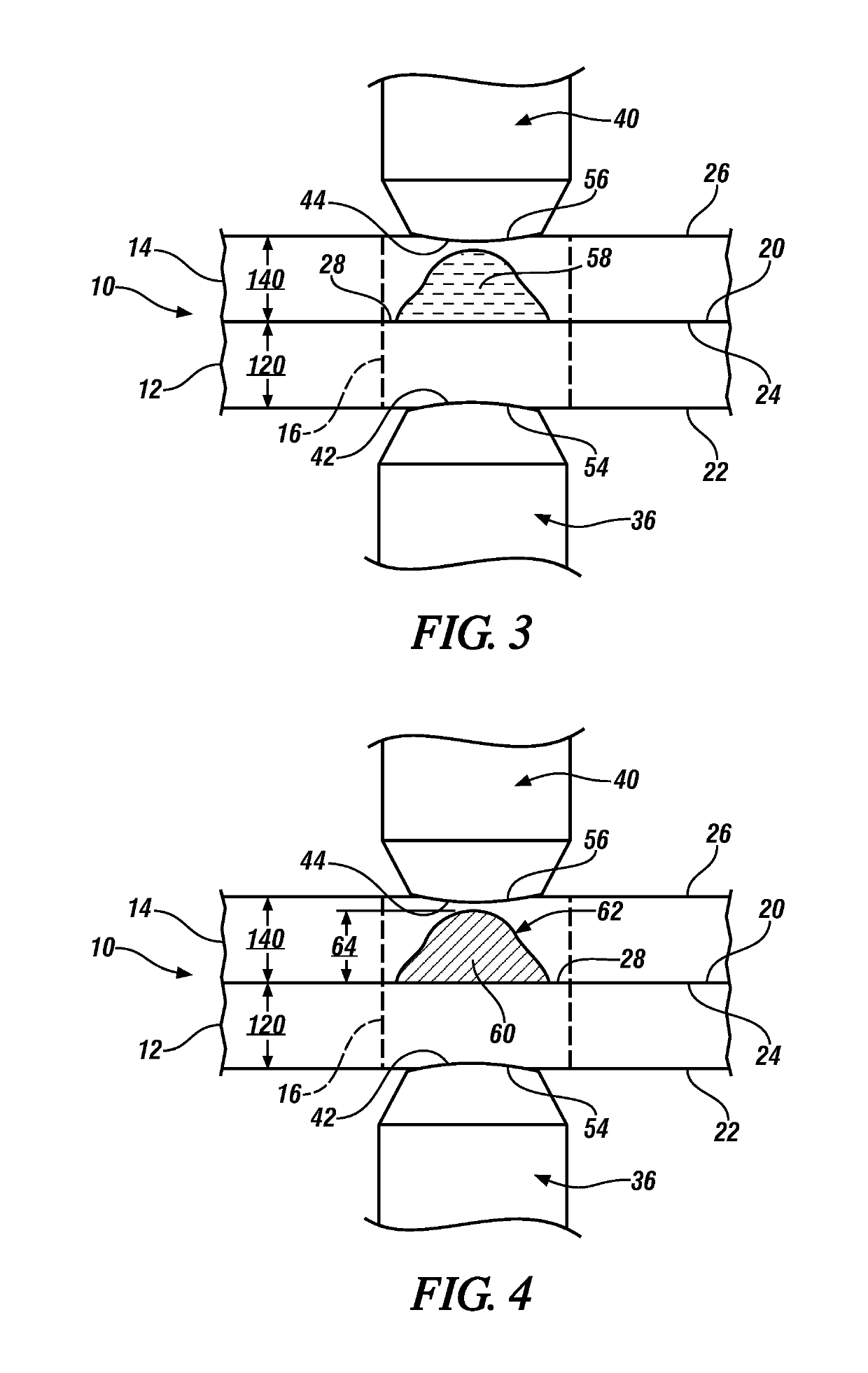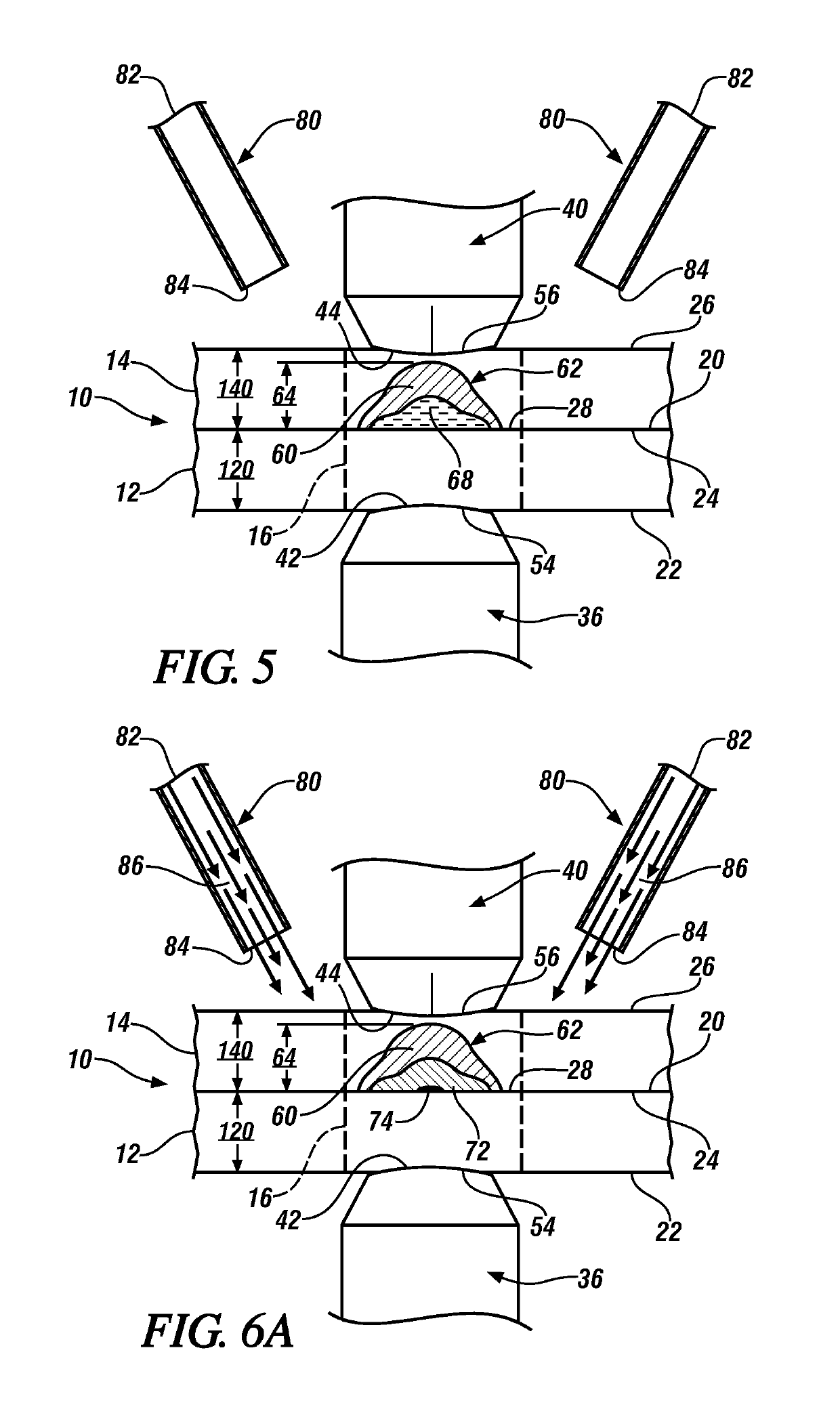Cooling to control thermal stress and solidification for welding of dissimilar materials
a technology of dissimilar materials and cooling, which is applied in the direction of manufacturing tools, soldering devices, auxillary welding devices, etc., can solve the problems of affecting strength, affecting the welding spot welding of steel workpieces to aluminum-based workpieces, and affecting the welding spot welding process, so as to reduce the amount, shape and location of aluminum oxide materials, improve the effect of cleanliness and strength
- Summary
- Abstract
- Description
- Claims
- Application Information
AI Technical Summary
Benefits of technology
Problems solved by technology
Method used
Image
Examples
Embodiment Construction
[0020]Spot-welding a steel workpiece and an aluminum-based workpiece (aluminum or aluminum alloys) presents some notable challenges, as discussed above. The surface oxide layer(s) present on the aluminum-based workpiece are difficult to breakdown and disintegrate, which, during traditional spot welding techniques, leads to weld defects at the faying interface in the form of micro-cracks and other disparities caused by residual oxides. Moreover, the steel workpiece is more thermally and electrically resistive than the aluminum-based workpiece, meaning that the steel workpiece is more rapidly heated and acts as a heat source while the aluminum-based workpiece acts as a heat conductor. The resultant thermal gradient established between the workpieces during and just after electrical current flow has a tendency to drive gas porosity and other disparities in the molten weld pool, including the residual oxide defects, towards and widely along the faying interface, and also contributes to ...
PUM
| Property | Measurement | Unit |
|---|---|---|
| temperature | aaaaa | aaaaa |
| flow rate | aaaaa | aaaaa |
| flow rate | aaaaa | aaaaa |
Abstract
Description
Claims
Application Information
 Login to View More
Login to View More - R&D
- Intellectual Property
- Life Sciences
- Materials
- Tech Scout
- Unparalleled Data Quality
- Higher Quality Content
- 60% Fewer Hallucinations
Browse by: Latest US Patents, China's latest patents, Technical Efficacy Thesaurus, Application Domain, Technology Topic, Popular Technical Reports.
© 2025 PatSnap. All rights reserved.Legal|Privacy policy|Modern Slavery Act Transparency Statement|Sitemap|About US| Contact US: help@patsnap.com



